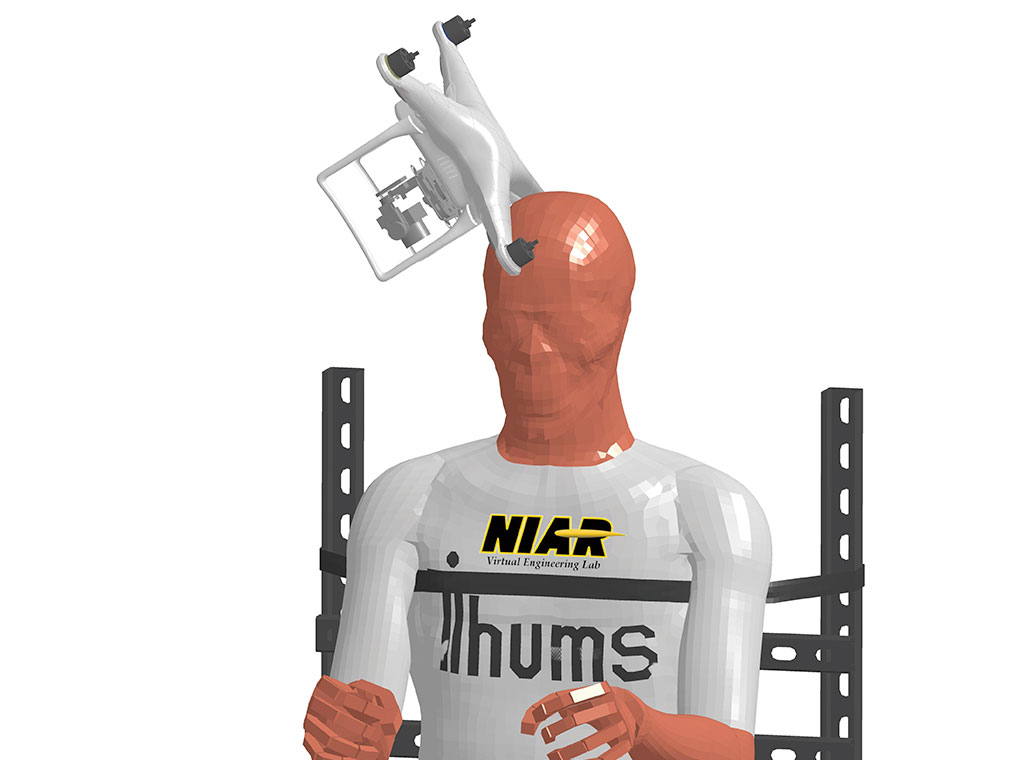UAS Ground Collision Severity Evaluation Phase II (A14_A11L.UAS.7)
Task A4 Ground Collision Severity and Task A11 Part 107 Waiver Study conducted ground collision studies and testing in support of a flight over people waiver, respectively. While the funding and scope of these studies were limited, the two studies provided a framework for potential approaches to quantify the injury severity of sUAS platforms during collisions with the non-participating public and property on the ground. The Task A4 effort also identified 23 knowledge gaps that formed the basis for recommendations for future research. Following an FAA sponsored Peer Review of the research, specific research gaps were identified and formed the basis for the research questions requested by the FAA that are addressed by the research questions below.
- What is a clear and easily repeatable test method to determine the injury potential from the amount of kinetic energy that is transferred to a person upon impact by a UAS under various conditions and scenarios? (NOTE: As discussed during the FAA sponsored Peer Review, the concept of energy transferred is difficult to quantify. Instead a comparison of calculated kinetic energy prior to impact will be correlated to human injuries using actual measured g load and durations. This injury potential of collision with a specific drone at a specific impact energy can be quantified using time histories of peak acceleration to determine Head Injury Criteria (HIC), peak linear acceleration and rotational acceleration along with other similar metrics to determine concussion and neck injury. This research will address injury potential using these and similar metrics rather than energy transferred as stated in the FAAs original research question. Follow on research may be used to create models that correlate structure flexibility, etc to human injury potential.)
- What is the research data (both rotorcraft and fixed wing UAS examples), detailed test methods, and other information necessary to develop and validate this type of test?
- Does the test method work when a parachute is engaged? And how do the results differ?
- What should an acceptable level of safety for the non-participating public be for such a test described above?
- What is the energy transferred that would cause a concussion versus the skull fracture that we saw in the first year of research? (See Note above pertaining to energy transferred versus injury potential using other metrics.)
FINAL REPORT | 
POC:
David R. Arterburn
Director
Rotorcraft Systems Engineering and Simulation Center – University of Alabama in Huntsville
Email: arterbd@uah.edu
Phone: 256.824.6846
Discussion:
For additional information and test results, please refer to the following annexes.







